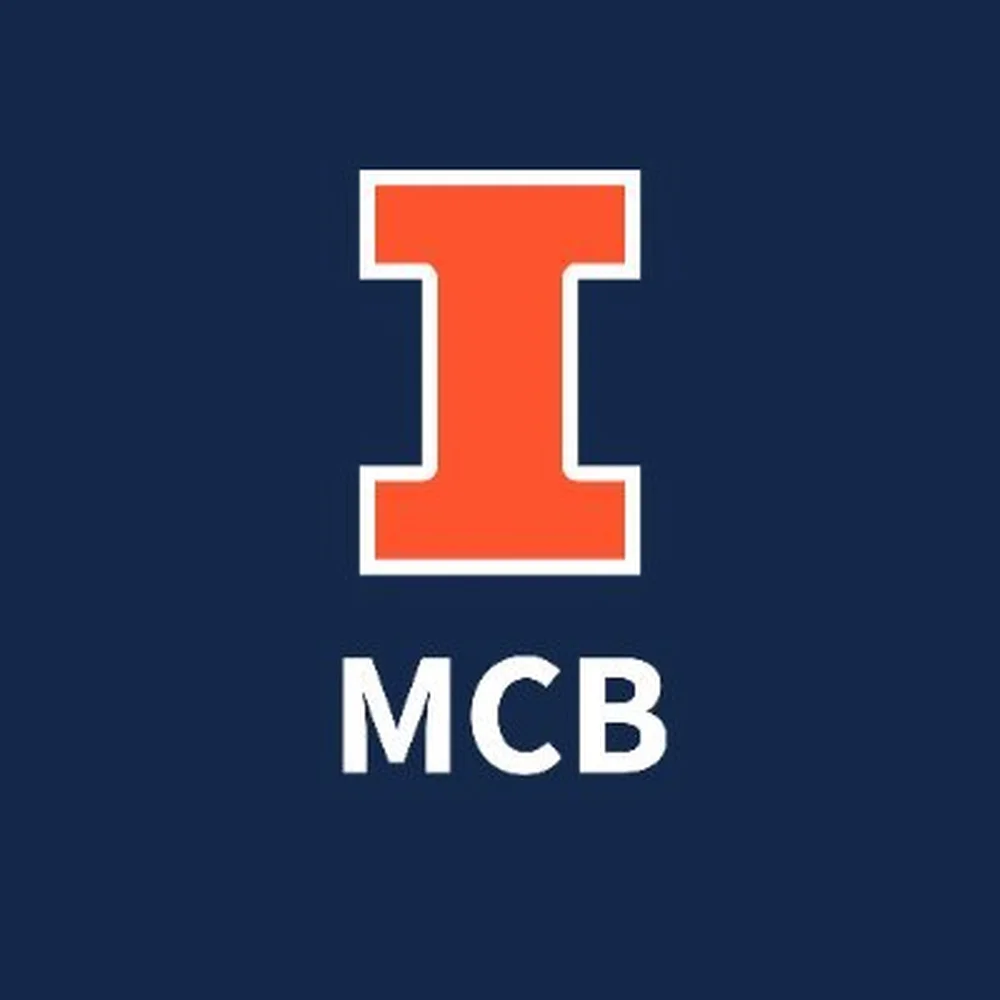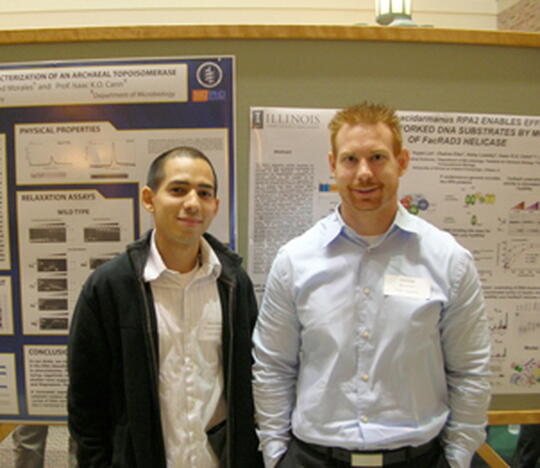
The Cell and Molecular Biology & Molecular Biophysics (CMB-MB) Training Grant Program celebrated its 21st annual research symposium in fall of 2008. The program encourages graduate students to explore interdisciplinary research including genetics, physiology, biophysics, and microbiology.
Faculty in eleven departments advise students in the program, including 25 professors from all four departments in the School of Molecular and Cellular Biology.
Over 85 graduate students participated in the symposium by presenting their research through detailed posters (pictured), and six students were chosen to give talks highlighting their work.
Dr. Dianne K. Newman from the Massachusetts Institute of Technology gave the keynote lecture.
The Cell and Molecular Biology & Molecular Biophysics (CMB-MB) Training Grant Program celebrated its 21st annual research symposium this past week. The program encourages graduate students to explore interdisciplinary research including genetics, physiology, biophysics, microbiology, and current issues in biochemical or molecular science.

Professors from eleven departments advise students in the program, including all four departments in the School of Molecular and Cellular Biology. Over 25 professors from Microbiology, Biochemistry, Cell and Developmental Biology, and Molecular & Integrative Physiology support a student in the program.
Six students were chosen to speak about their research at the symposium, and Dr. Dianne Newman from the Massachusetts Institute of Technology spoke as invited keynote speaker.
Lavanya Anandan, a graduate student working in Professor Milan Bagchi’s molecular and integrative physiology lab, was the winner of an award for Outstanding Student Talk. Her research focuses on a gene first discovered in the Bagchi lab, which responds to the presence or absence of the estrogen hormone. The gene, called estrogen-regulated gene 1 (ERG1), is critical for the development of properly functioning mammary glands.
Mice without ERG1 were engineered, and their mammary glands were noticeably underdeveloped. Mothers without the gene were unable to produce enough milk from their mammary glands to nourish their pups.
Understanding this development of the mammary gland is important for cancer research. If ERG1 must be present for proper growth of the mammary gland, too much ERG1 may be linked with uncontrolled growth, or cancer, in the breast. Anandan’s resent research has indeed shown that some breast tumors have 60 times more ERG1 than normal breast tissue.
"It is great to be recognized for my work. It was one of the most thrilling experiences in my scientific career,” she said.

Anandan’s advisor, Milan Bagchi, pointed out that “her recent findings [have] opened up new ways to think about the development of this disease and its management. She has worked tirelessly in a challenging project and made important strides in her research.”
The symposium also included two poster sessions that took place between student talks. 85 students in the CMB-MB Training Grant Program were chosen to create and present posters that highlighted their research.
Faculty judges examined the posters and spoke with the students about their work during each session. Awards for Outstanding Poster were given out based on the judge’s reviews.
Winners included student Vijay Gupta for his work on H. pylori infection, done in the lab of microbiology professor Steven Blanke.
James Heeres, a student in the Department of Biochemistry, also recieved the Outstanding Poster award for his work on neurodegenerative disease and cell death.
The keynote lecture was given at the end of the symposium, followed by a reception for the students and faculty.
Dr. Newman's work highlighted a group of colorful pigmented antibiotics. Some microbes produce these antibiotics during the late stages of their development, and may actually need them to survive. She hopes the link between these antibiotics and microbial survival can help the design of new therapeutics used to fight infections.
The Cell and Molecular Biology & Molecular Biophysics Training Grant Program is funded by The National Institute of Health. The symposium took place on Friday, November 14 in the Beckman Institute.